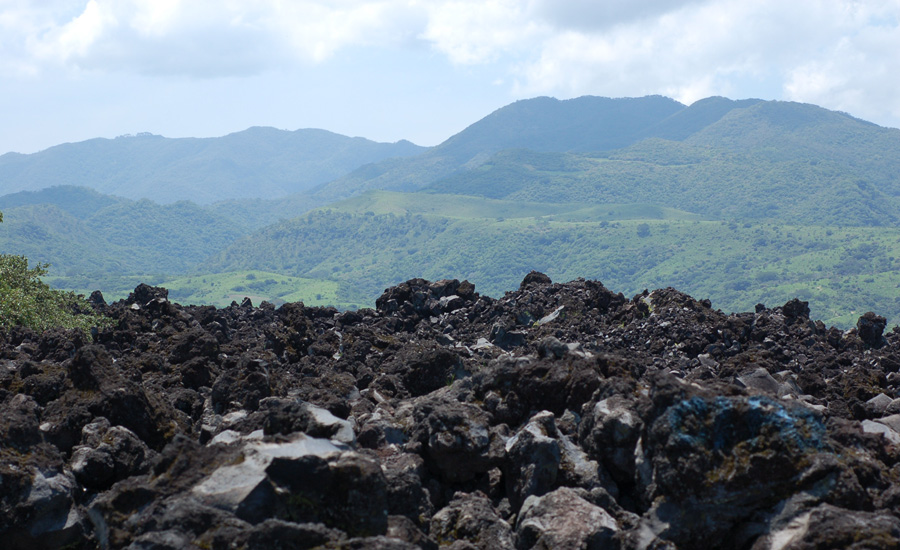
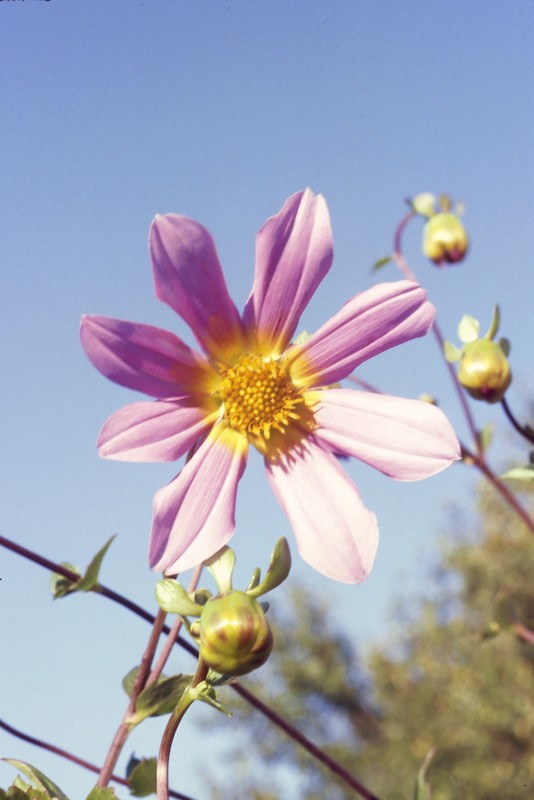
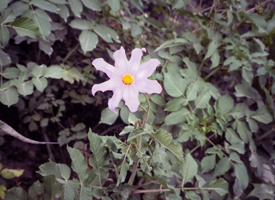 D. spectabilis at type locality, San Luis Potosí, Mexico.
D. spectabilis at type locality, San Luis Potosí, Mexico.
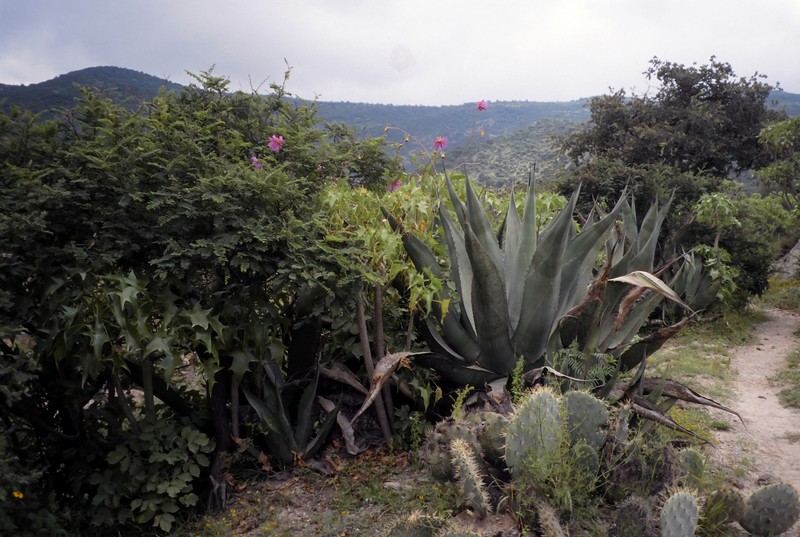 D. spectabilis at type locality, protected from grazing animals by cactus, Agave, and other spiny plants. Path used by domesticated animals to right.
D. spectabilis at type locality, protected from grazing animals by cactus, Agave, and other spiny plants. Path used by domesticated animals to right.
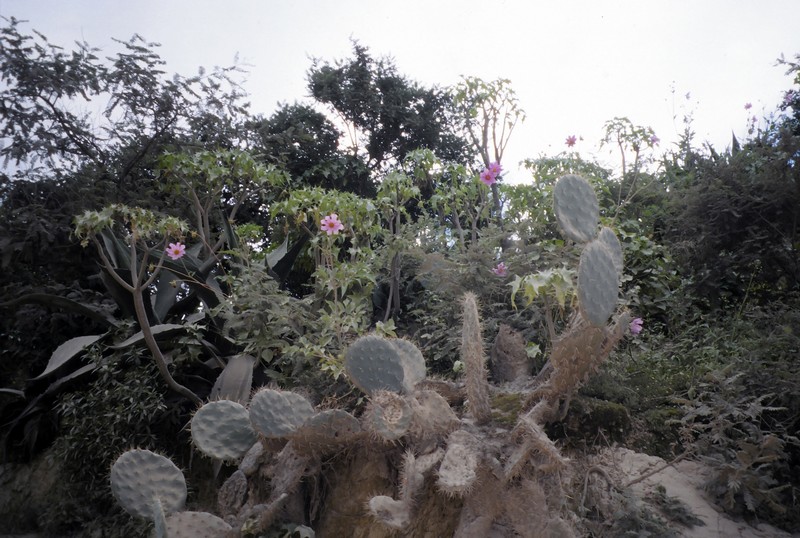 D. spectabilis at type locality (view from road), growing behind cactus (dust on foreground plants from road).
D. spectabilis at type locality (view from road), growing behind cactus (dust on foreground plants from road).Dahlia spectabilis D.E. Saar & P.D. Sørensen was discovered during a collecting trip in 2005 east of Zaragoza along a gravel road to Salitrera, in the Mexican state of San Luis Potosí (Saar, 1999). The specific epithet, spectabilis, was chosen to reflect the fact that these are large and showy plants (Saar et al., 2002). The only population observed was growing in an arid zone of mimosoid scrub (bean family with Mimosa-like flowers), arborescent Opuntia (tree-like/size cactus), and large Agave (includes Century Plant and others with similar habit). The plants were growing along the top edge of an ENE-facing dry clay roadcut at an elevation of 2,030 meters (6,660 feet). Agave, Opuntia, and other tough and spiny plants surrounded the dahlias and formed a living fence that protected them from grazing animals. After finding the original population, J. P. Hjerting, P. D. Sørensen, and D. E. Saar searched east of the original locality to Salitrera, in hopes of locating additional populations, but much of the countryside was heavily grazed and no other plants were located. Heavy grazing has severely degraded many areas of Mexico (e.g., Bacon & Saar, 2007).
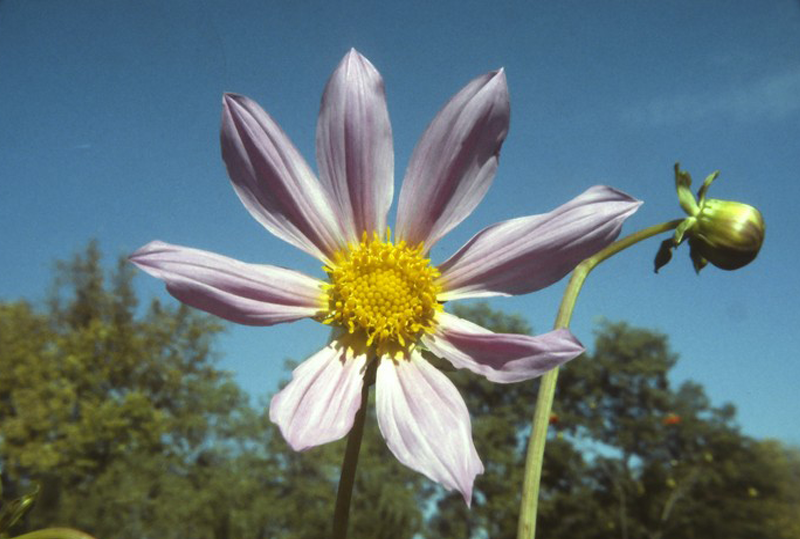
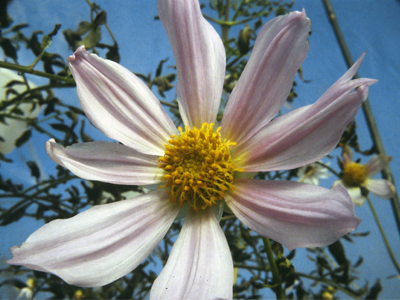 D. spectabilis in cultivation in author’s plot.
D. spectabilis in cultivation in author’s plot..png)
.png)
-reearrange.png)
-better_dup_0803.png)
This species has 64 chromosomes per cell.
References:
Bacon, J.R. and D.E. Saar. 2007. Investigando el Flor de México. Universale Forestum 6: 12-14. [in Spanish]
Saar, D.E. 1999. A phylogenetic analysis of the genus Dahlia (Asteraceae): an interdisciplinary study. Ph.D. dissertation, Department of Biological Sciences, Northern Illinois University, DeKalb, IL, USA, 266pp.
Saar, D.E., P.D. Sørensen, and J.P. Hjerting. 2002 Dahlia spectabilis (Asteraceae): a new species from San Louis Potosí, Mexico. Brittonia 54: 116-119.
Saar, D.E., N.O. Polans, and P.D. Sørensen. 2003. A phylogenetic analysis of the genus Dahlia (Asteraceae) based on internal and external transcribed spacer regions of nuclear ribosomal DNA. Systematic Botany 28: 627-639.